Titanium Exhaust vs Stainless Steel Exhaust: Why Titanium is the Smarter Choice
Updated : Oct. 24, 2025Why is this comparison important?
In the car and motorcycle modification circles, people often ask: "Should I choose a titanium alloy exhaust pipe or a stainless steel exhaust pipe?"
This is not only a choice of material, but also related to performance, cost and long-term use value.
Stainless steel: cost-effective, easy to maintain, and standard on many mass-produced vehicles.
Titanium alloy: light, strong, and resistant to high temperatures, it is the "trump card" for high-performance modifications and racing cars.
Next, we will use some intuitive data and cases to compare these two materials.
1. Weight Difference: Losing More Than Just a Few Kilograms
The density of titanium alloy is approximately 4.5 g/cm³, while that of stainless steel is 7.8 g/cm³.
Let's take an intuitive example:
- A stainless steel exhaust system (mid-section + tail section), which may weigh around 20 kg;
- A titanium alloy exhaust with the same structure usually weighs only around 10 kilograms.
This means:
- In racing, this is equivalent to directly reducing the weight of a drop tank;
- On a motorcycle, it can make the entire vehicle more flexible and respond faster when cornering.
Lightweighting not only improves acceleration performance, but also improves braking performance and fuel consumption.
2. Heat resistance and lifespan: Which can better withstand high temperatures?
The long-term enemies of the exhaust system are heat and oxidation.
Stainless steel: The upper temperature resistance limit is generally 600-800 ℃. It will discolor and oxidize under long-term high temperature, and may rust after 3-5 years.
Titanium alloy: It can withstand temperatures up to 1,200°C and can be used stably for a long time even in the front section of turbocharged models, with a service life often exceeding 8-10 years.
If your vehicle is for daily commuting, stainless steel is sufficient;
But if you are a racing driver, a modification enthusiast, or looking for a one-time investment with long-term use, titanium alloy will be more worthwhile.
3. Appearance and craftsmanship: from practicality to art
The stainless steel exhaust is silver in appearance and is functional but standard.
Titanium alloys are completely different:
- Under welding and high temperature conditions, the titanium tube will show a blue-purple gradient color, which is almost an "artistic effect";
- High-end brands (such as custom exhaust shops) often use this welding color as a trademark;
- CNC pipe bending + welding technology can also meet the modification needs of complex car models.
That is:
Stainless steel is "practical";
Titanium alloy combines "performance and aesthetics".
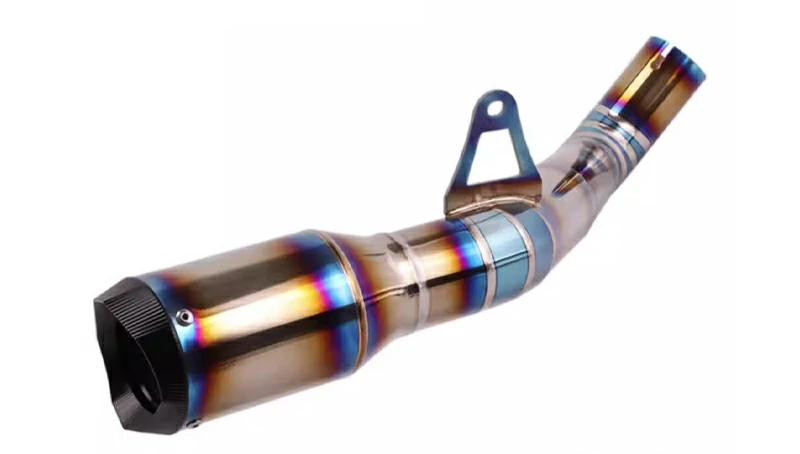
4. Cost and Value: Balancing Short-Term and Long-Term
| Comparison items | stainless steel exhaust pipe | Titanium alloy exhaust pipe |
|---|---|---|
| Material costs | Lower | Higher |
| weight | About 20kg | About 10kg |
| Upper temperature limit | 600–800 ℃ | 1,200 ℃ |
| life | 3–5 years | 8–10 years |
| Appearance | Silver gray | Blue-purple gradient welding color |
| Application Scenario | Daily commuting, mass-produced vehicles | Racing cars, motorcycles, high-end modifications |
Titanium alloys have a higher upfront cost, but if you look at lifespan + performance gains, the long-term cost of ownership isn't much higher than stainless steel.
5. Application Cases: Choices in Different Scenarios
Car modification:
- Common Y-Pipe Upgrade for Nissan 350Z / 370Z;
- Toyota GR Supra (A90) modified front and center pipes;
- Subaru BRZ / Toyota 86 often use Catless front pipes.
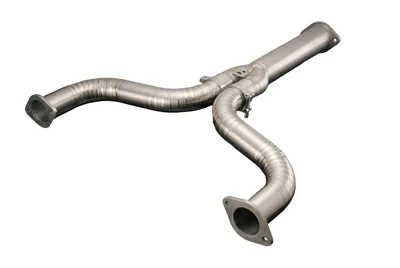
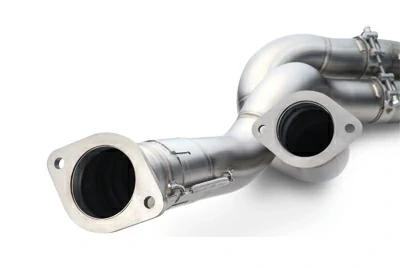
Motorcycle modification:
- Yamaha R1 common Link Pipe, Header upgrade;
- The Kawasaki ZX-10R uses titanium short tubes and mid-tail sections;
- The Yamaha MT-10 prefers a custom titanium tailpipe.
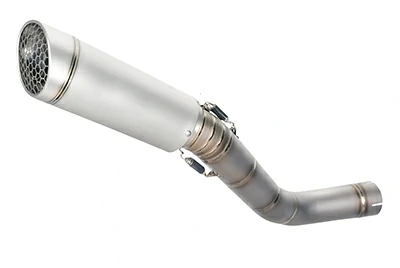
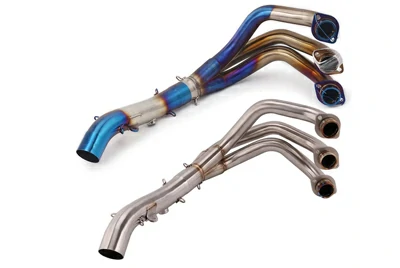
These cases show that titanium alloy exhaust is no longer exclusive to racing cars, but is gradually entering more high-end modification and personalized demand scenarios.
Summary: How to choose?
If your goal is cost-controllable and daily use → stainless steel exhaust pipes are still a safe choice.
If you are looking for lightweight, high temperature resistance and long life → titanium alloy exhaust pipe is undoubtedly better.
As a professional supplier of titanium alloy exhaust pipes and components, we offer a full range of products, including straight pipes, elbows, Y-shaped pipes, front-end pipes, and connecting pipes. We also support OEM/ODM customization.
Whether you're a tuner or a manufacturer, we can find a matching solution.




